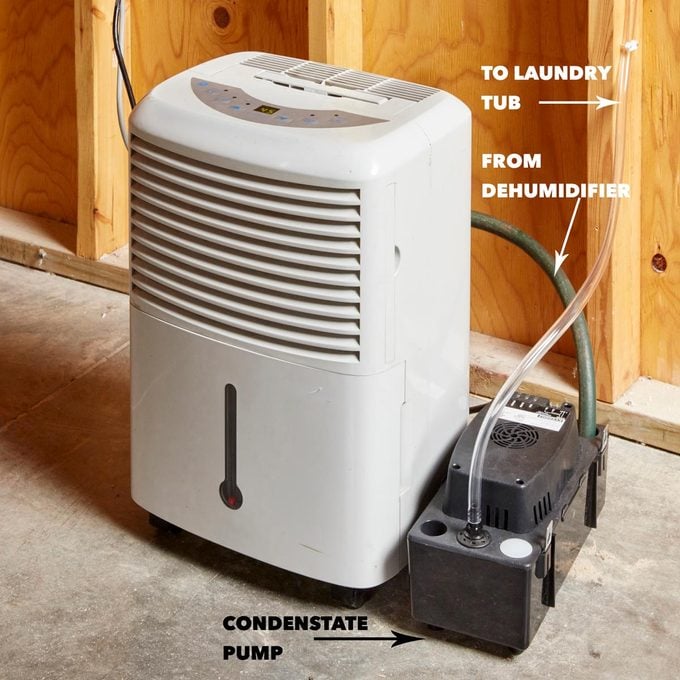If you forget to empty the tank on your dehumidifier, it’ll either overflow or shut off. That defeats the whole purpose of running a dehumidifier in damp areas.
Save Time and Money With This Self-Draining DIY Dehumidifier

One Less Thing to Remember
If you forget to empty the tank on your dehumidifier, it’ll either overflow or shut off. That defeats the whole purpose of running a dehumidifier in damp areas. I didn’t have a floor drain in that part of the basement, so I bought a condensate pump ($40 to $100 at home centers) and tubing and rigged it to my dehumidifier. Then I ran the tubing up to the ceiling, through the joist areas and down to the laundry tub. Now the dehumidifier runs full time, and I never need to empty the tank or worry about it shutting off. — Doug Baltzer
Alternative Ideas
If a traditional dehumidifier isn’t in the cards, there are a few alternative ideas for taking moisture out of the air. These simple tactics involve the use of some common household chemicals. In these instances, spread the ingredients out in a pan or in a bowl or even in an old sock and place in the affected area to begin collecting moisture. These ideas are most effective in small, enclosed areas like a refrigerator, a drawer or perhaps even a closet.
Some of the ingredients to use for dehumidifying include:
- Charcoal – Works best in a porous container like a sock or a vessel with holes poked in it. Also controls odors.
- Baking soda – As simple as opening a box and placing in affected areas. Replace when material hardens.
- Silica gel beads – These are the little pouches that come with medicines, clothing, electronics, etc. Gather enough of them together and they make a good DIY dehumidifier.
- Road salt aka calcium chloride – Works very well. Place in a sock or vessel with holes punched in side. Place over a container as excess water can collect.
- Rock salt or table salt – Work similarly to road salt, but not as effective. Will dissolve as they absorb water. Place in a container where dissolved water can collect. Rock salt is typically more economical than table salt.



















